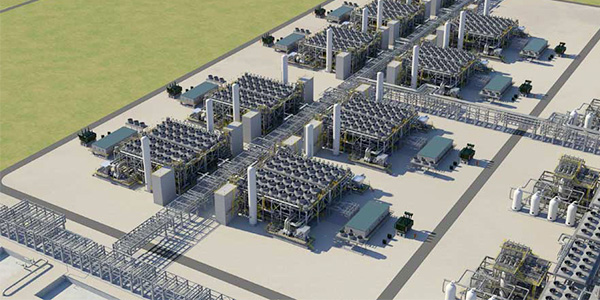By Rich Heidorn Jr.
Democrat Cheryl LaFleur joined with FERC’s two Republicans on Thursday to approve the Calcasieu Pass LNG export terminal, signaling a compromise on how to compute greenhouse gas emissions from it and other pending LNG projects (CP15-550).
Democrat Richard Glick, who has joined LaFleur to oppose some gas pipeline projects, dissented.
In a press release, FERC hailed the approval of Venture Global LNG’s terminal, related pipelines and a 720-MW generation facility in Cameron Parish, La., as a “breakthrough … agreement that may provide a path forward” for the commission’s review of 12 other proposed LNG export facilities.
Chairman Neil Chatterjee, who joined with Commissioner Bernard McNamee in the 3-1 vote last week, said expediting the commission’s review process has been one of his priorities.
“I really appreciate the efforts of my colleagues to work together to come to an agreement on this facility. This is significant, as I anticipate we’ll be able to use the framework developed in this order to evaluate the other LNG certificates that the commission is considering.
“Commissioner McNamee showed just how he got his reputation as being a ‘lawyer’s lawyer’ through his attention to the law and work to find common ground,” Chatterjee continued. “And Commissioner LaFleur was supportive of this project and constructive in working to reach our agreement.”
By refusing to address pipelines’ impact on GHG emissions, Glick contends, the Republicans are ignoring a 2017 D.C. Circuit Court of Appeals order that remanded FERC’s approval of an environmental impact statement (EIS) for the Southeast Market Pipelines Project. (See Glick Shines Light on FERC Dispute over GHG.)
Until someone is appointed to replace late Commissioner Kevin McIntyre, LaFleur and Glick can block gas projects with 2-2 deadlocks. That has led Chatterjee to pull gas items from the consent agenda at open meetings.
Environmental Impact
Calcasieu Pass will be able to process up to 12 million metric tons of natural gas a year. Under its 1999 Certificate Policy Statement, the commission balances the public benefits of such projects against the potential harms.
FERC said its final EIS concluded the project “will result in some adverse environmental impacts, but impacts will be reduced to less-than-significant levels with the implementation of applicants’ proposed, and commission staff’s recommended, mitigation measures.”
The EIS found that operation of the terminal and its generating facility may result in emissions of up to 3.9 million metric tons per year of CO2 equivalent, potentially increasing U.S. emissions by 0.07%. “Currently, there are no national targets to use as benchmarks for comparison,” FERC said.
‘Kafkaesque Approach’
In his dissent, Glick said the commission’s analysis did not meet the requirements of the National Environmental Policy Act or Natural Gas Act and “effectively writes climate change out of the public interest determination entirely.”
“The commission is finding that its choice not to evaluate the significance of the environmental harm caused by the project’s GHG emissions supports the conclusion that the project will not cause significant environmental harm. That Kafkaesque approach is not the ‘hard look’ that NEPA requires,” he said. “The commission’s rigid refusal to monetize the harms of climate change using the social cost of carbon while simultaneously monetizing the project’s long-term socioeconomic benefits — including direct, indirect and induced benefits from employment, investments and local taxes — is arbitrary and capricious.”
In a concurring statement, LaFleur said, “I appreciate the work done in the final EIS to address a range of resources impacted within the identified geographic scope of the Calcasieu Pass project. However, I disagree with the commission’s failure to disclose and discuss cumulative potential direct GHG emissions associated with Calcasieu Pass project, as well as the other projects identified in the final EIS within the 50-km air region.”
LaFleur said she also disagreed with the exclusion of the emissions from the cumulative impacts analysis.
“I believe it would take minimal effort to disclose the direct GHG emissions for the other projects identified in … the final EIS, and include an estimate of the total annual potential GHG emissions associated with the Calcasieu Pass project and those other projects as part of our environmental review.”
LaFleur’s statement included a table estimating that Calcasieu Pass and 10 other LNG or gas projects within 50 km would increase national GHG emissions by almost 0.8%.
“It is clear that the liquefaction of natural gas for export has meaningful GHG consequences,” she said. “I believe, at a minimum, direct GHG emissions must be disclosed and considered, both cumulatively and with respect to individual facilities.”





